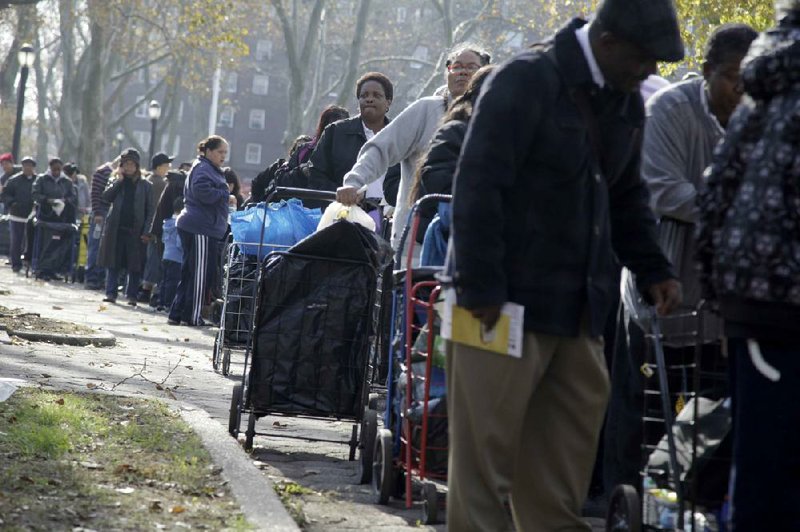ALBANY, N.Y. — Gov. Andrew Cuomo plans to request $30 billion in federal aid to rebuild after Hurricane Sandy, which heavily damaged parts of New York City and Long Island, he said Monday.
The administration will seek a supplemental appropriation to cover infrastructure, repair and emergency costs beyond those normally covered by federal emergency aid, Cuomo said. “I’ve asked for 100 percent reimbursement,” he said.
Generally the Federal Emergency Management Agency will reimburse up to 75 percent of public costs, with the state and local authorities covering the remaining 25 percent. There have been cases, such as Hurricane Katrina, where the federal government has reimbursed up to 90 percent of costs.
“The equity and the fairness is inarguable in this case,” Cuomo said. It will probably be a regional plan including New Jersey and Connecticut, with money for infrastructure, housing, local governments and small business, he said.
Meanwhile, Long Island Power Company reported nearly 60,000 power failures Monday, two weeks after the storm.
The utility has restored power to nearly 1.1 million homes and offices all together. About 46,000 still waiting for power are along Long Island’s south shore and Rockaway Peninsula and had water damage to electrical panels and wiring. Their service can’t be restored without an inspection and possibly repairs. The utility said it expects to restore service to the last 11,000 customers outside flooded areas by late today or early Wednesday.
At its peak, the storm knocked out power to 8.5 million customers in 10 states, with New York and New Jersey bearing the brunt. Those failures have been nearly erased, though Consolidated Edison, the chief utility in New York City, has cited problems similar to the Long Island utility’s, saying about 16,300 customers in flooded areas of Brooklyn, Queens and Staten Island can’t get service until their internal electrical equipment is repaired, tested and certified.
Long Island Power Company acknowledged that customers aren’t getting the information they need, partly because of the system, which it is updating. Authority officials said the new system will be operating next year.
The plan to request federal aid would help cover the cost of improvements like a power grid meant to improve utilities’ ability to find and fix failures. It would also upgrade New York City’s fuel supply capacity to help prevent consumer shortages and add new oil and gas pipelines from New England to reduce dependence on shipping the fuel.
Long lines at gas stations led to alternate-day rationing in both New York and New Jersey after the storm.
New Jersey Gov. Chris Christie said that his state’s gas rationing plan would be discontinued at 6 p.m. today.
Kevin Roberts, a spokesman for Christie, said the rationing was no longer needed in New Jersey because “the power restoration and fuel delivery efforts of the past two weeks have allowed lines to subside, lessening the need for this type of rationing system.”
Last week, Cuomo said the storm would cost New York state $33 billion, and he was counting on a commitment from the Obama administration for reimbursement for many public costs of rebuilding.
Even before the storm, the Cuomo administration had projected a $1 billion state deficit for the fiscal year with a $132 billion government budget. That deficit was expected to grow after the storm.
Meanwhile, Christie said he isn’t sure whether he’ll still pursue a tax cut that was the centerpiece of his economic strategy because Sandy possibly hurt state revenue in October and November.
Collections may pick up in the months ahead as New Jersey residents replenish supplies to rebuild, Christie said. He said he will decide whether to push for lower taxes after seeing the latest revenue figures.
Information for this article was contributed by Michael Virtanen, Alicia Caldwell and Jennifer Peltz of The Associated Press; by Winnie Hu of The New York Times; and by Elise Young of Bloomberg News.
Front Section, Pages 4 on 11/13/2012

